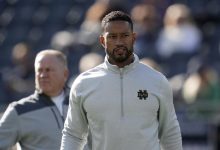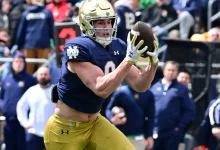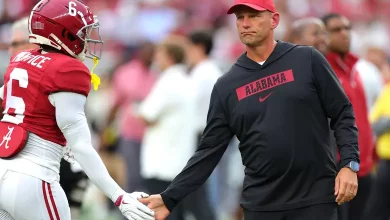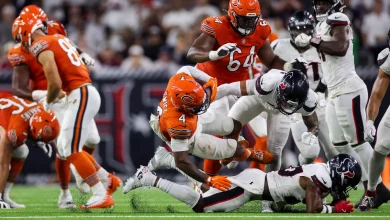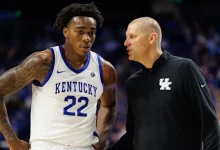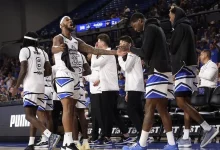Dallas Cowboys owner Jerry Jones admitted he has considered stepping down from his dual role as general manager and owner—but only for “small fractions of seconds” before publicly rejecting the idea.
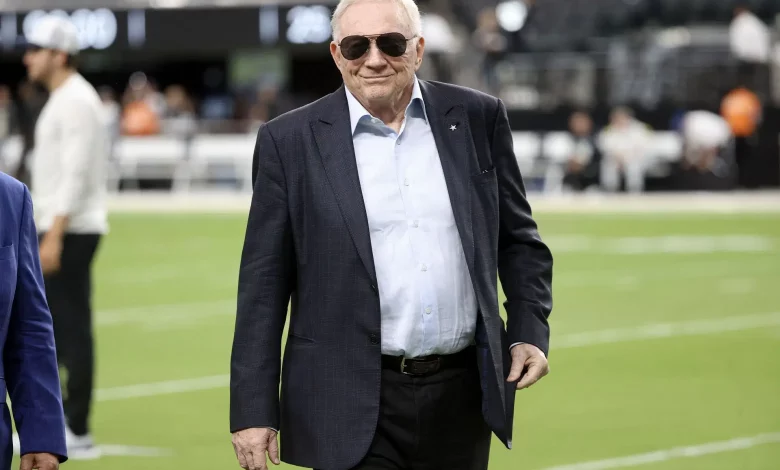
Dallas Cowboys owner Jerry Jones, a figure whose influence in the NFL is both immense and at times controversial, recently made waves by admitting he has considered stepping down from his dual role as both the owner and general manager of the Cowboys. However, as is often the case with Jones, this brief moment of introspection lasted only “small fractions of seconds” before he quickly rejected the notion, reaffirming his commitment to overseeing both the business and football operations of the Cowboys. His comments, though brief, opened up a broader conversation about his unique position in the NFL and the challenges that come with being both a team owner and the one pulling the strings in the front office.
Jerry Jones, now 81 years old, has been the owner of the Cowboys since 1989. Under his leadership, the franchise has been transformed into one of the most recognizable and valuable sports teams in the world. His vision, business acumen, and ability to navigate the complex landscape of NFL ownership have made him a titan in both sports and business. However, as the years have gone by, the debate surrounding Jones’ dual role has only intensified. While many admire his passion and hands-on approach, others question whether it’s time for the team to transition to a more traditional structure where a general manager or team president handles the day-to-day football decisions.
Jones’ admission that he’s thought about stepping down from his role as general manager is a rare moment of vulnerability from a man who’s built a reputation for being fiercely in control. His refusal to entertain the idea, even for a moment, speaks to his unyielding attachment to the team and its success. To understand the implications of Jones’ dual role and why he’s been reluctant to change it, it’s essential to look at his history, his approach to team management, and the current state of the Cowboys.
When Jerry Jones purchased the Cowboys in 1989 for $140 million, he was determined not only to own the team but to be actively involved in its football operations. This was a bold move at the time. Typically, NFL owners were hands-off when it came to decision-making, relying on a general manager or team president to run the team’s day-to-day operations. However, Jones’ approach was different from the start. He made it clear that he would play a central role in all major football decisions, including hiring coaches, drafting players, and negotiating contracts.
In many ways, Jones’ involvement as both owner and general manager has been a key part of his identity. He’s been at the forefront of major decisions, from the controversial firing of Tom Landry, the legendary Cowboys head coach, in favor of Jimmy Johnson, to his more recent moves like hiring Mike McCarthy as the head coach. Throughout the years, Jones has always been the face of the Cowboys’ decision-making process, and his fingerprints are all over the team’s successes and failures.
There’s no question that his bold decisions have been instrumental in shaping the Cowboys’ success. Under his leadership, the team has won three Super Bowl championships (in the 1992, 1993, and 1995 seasons), and the Cowboys have consistently been one of the most valuable sports franchises in the world. As of 2023, the Cowboys are estimated to be worth over $8 billion, making them the most valuable NFL franchise. Jones’ business acumen, coupled with his passion for the team, has led to lucrative sponsorships, a state-of-the-art stadium in AT&T Stadium, and a global fanbase that stretches far beyond the United States.
However, as time has gone on, Jones’ role as general manager has been met with growing criticism. His tendency to make bold moves has sometimes backfired, and some have argued that the Cowboys would benefit from a more traditional management structure. For instance, in the 2010s, the Cowboys underwent a series of disappointing seasons, and while the team showed flashes of greatness, they often fell short in critical moments. Critics pointed to Jones’ refusal to cede control of the front office as a possible reason for the team’s lack of sustained success.
Jones himself has always rejected the idea that his dual role is a problem. In interviews, he’s often defended his approach, stating that he has the experience and knowledge to run both the business and football sides of the operation. He’s also quick to point out that, ultimately, he’s the one responsible for the team’s performance. When the Cowboys succeed, it’s a testament to his leadership; when they fall short, he takes the blame.
The question, however, remains: Is this the best model for the Cowboys moving forward?
One of the most common criticisms of Jones’ dual role is that it can sometimes cloud decision-making. While Jones is undoubtedly passionate about the Cowboys’ success, his emotional investment in the team can sometimes lead to decisions that seem out of step with the long-term interests of the franchise. Critics argue that the Cowboys would benefit from a more traditional organizational structure, where a general manager or president of football operations handles all football-related decisions, leaving the owner to focus on the business side of things.
Many successful franchises in the NFL operate under this model. For example, the New England Patriots have enjoyed sustained success under head coach Bill Belichick and general manager Nick Caserio (and now the team’s new GM). The Pittsburgh Steelers have long maintained a stable front office structure under general manager Kevin Colbert, with ownership remaining more hands-off. These teams, among others, have had success because their football decisions are handled by experts in the field, without the interference of an owner who might be too emotionally involved.
For the Cowboys, the argument for a more traditional structure is even stronger given the team’s ongoing challenges in the postseason. Since Jones took over, the Cowboys have only won three Super Bowls and have made it to the NFC Championship game only a handful of times. In recent years, the team has consistently made the playoffs, but they have often faltered when it matters most, especially in the latter rounds of the postseason.
A fresh perspective from a general manager who can make objective, long-term decisions might be just what the team needs to push them over the edge. Moreover, a shift in the organizational structure could also help address the criticism that Jones’ personal relationships and emotional ties to certain players or coaches have sometimes led to suboptimal decisions.
For example, there has been criticism that Jones’ loyalty to certain individuals—whether it’s a coach, a player, or an executive—has sometimes resulted in decisions that are not in the best interest of the team’s long-term health. A more hands-off approach could allow for decisions to be made based on performance and strategy, rather than personal or emotional factors.
Despite the growing calls for Jones to step back, there’s another side to the argument that has to be considered. For many, Jerry Jones is not just the owner of the Cowboys but the embodiment of the team itself. His leadership, personality, and vision have shaped the team in ways that go beyond what’s happening on the field.
Jones is a larger-than-life figure, and his influence extends far beyond the Cowboys’ locker room. His leadership has made the Cowboys a global brand. The team’s success off the field, particularly with the development of AT&T Stadium and the team’s marketing and merchandising strategies, is largely due to Jones’ vision. He has been instrumental in creating a culture that appeals not only to Cowboys fans but to a broader, more diverse audience.
It’s also worth noting that while the Cowboys’ success on the field has been inconsistent in recent years, the team’s financial success under Jones has been unparalleled. The Cowboys are consistently one of the top revenue-generating teams in the NFL, and much of that is due to Jones’ ability to turn the Cowboys into a brand that extends far beyond football. Jones has leveraged his celebrity status to secure endorsement deals, sponsorships, and investments that have helped the Cowboys remain financially dominant in the league.
Furthermore, Jones has never shown any signs of slowing down. His energy, enthusiasm, and commitment to the team remain as strong as ever. The idea of him stepping down, even in small fractions of seconds, is likely a fleeting thought driven by external pressures rather than a genuine desire to walk away. In many ways, the Cowboys are Jerry Jones, and the thought of relinquishing control over the team may simply be unthinkable to him.
Jerry Jones’ admission that he has considered stepping down from his dual role as owner and general manager, even if only for a moment, speaks to the complexity of his position. As one of the most influential figures in NFL history, Jones has built a team that has consistently been in the spotlight both on and off the field. His vision, leadership, and commitment to the Cowboys have helped shape the franchise into what it is today. However, as the team faces new challenges and the NFL landscape evolves, the question of whether his dual role remains the best model for success is one that can’t be ignored.
While a shift to a more traditional structure could help the Cowboys find more consistency on the field, there’s no denying the impact Jerry Jones has had in turning the Cowboys into a global powerhouse. Whether or not he decides to step away from his day-to-day football operations, one thing remains clear: Jerry Jones will forever be tied to the fate of the Cowboys, and the team’s future, for better or worse, will continue to be shaped by his unique vision and leadership.

